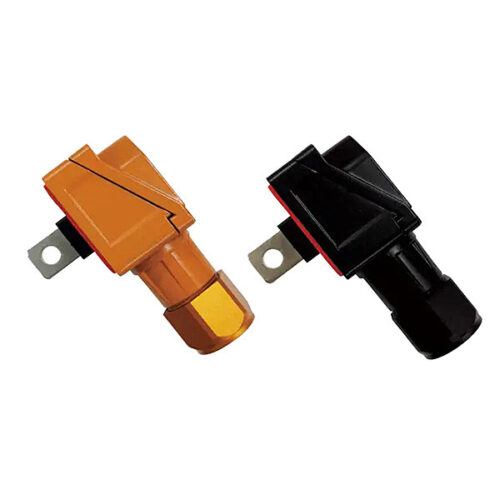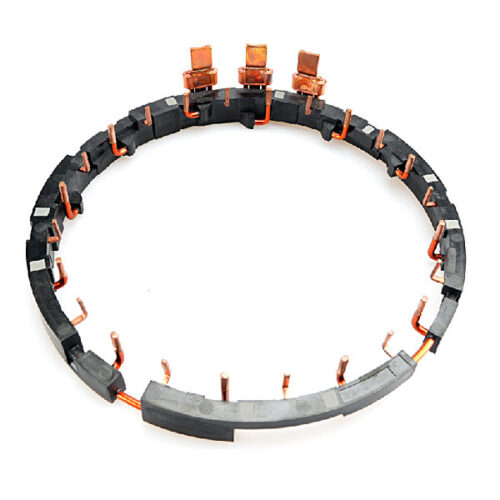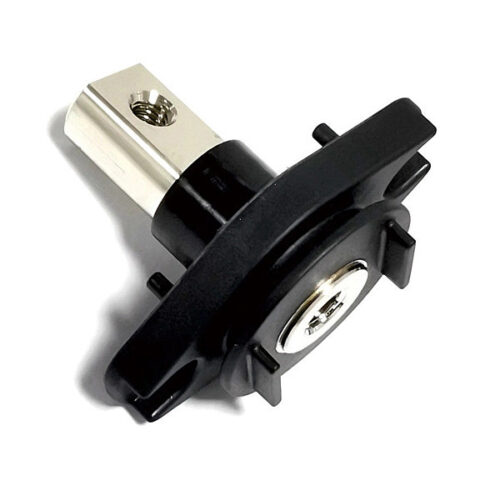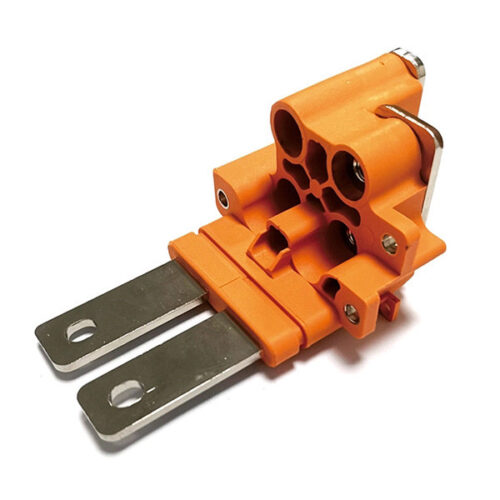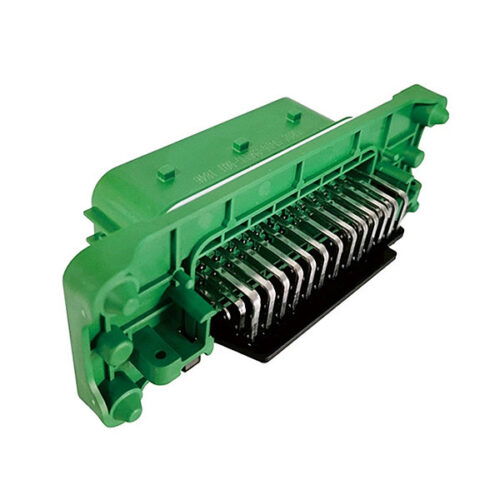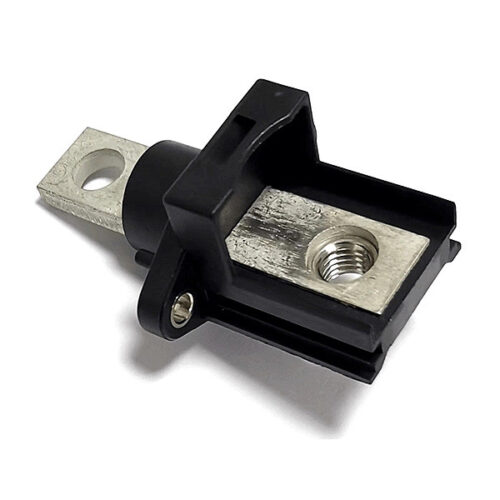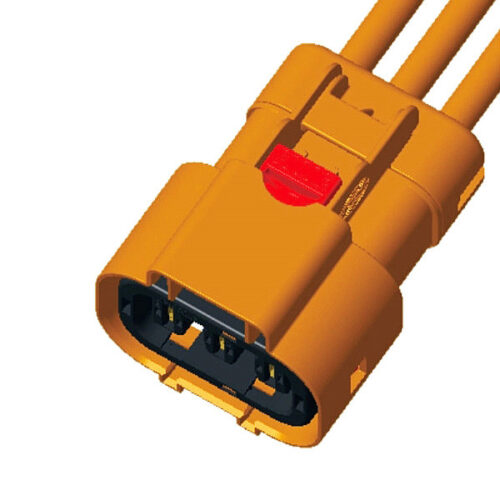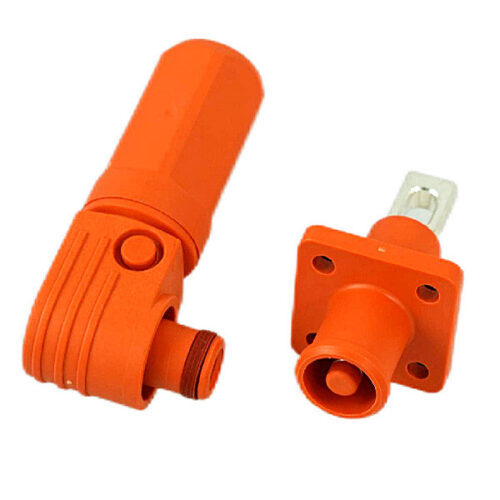Blogs & News
We are focus on automotive wiring harness & connectors technology.
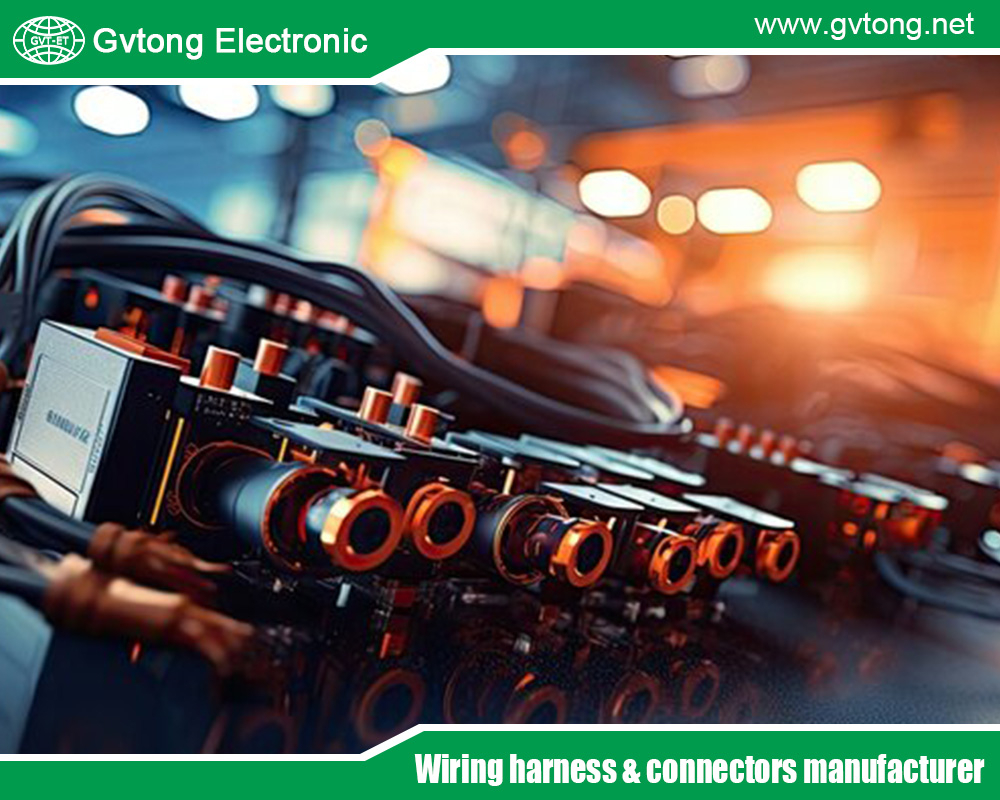
The Key to Automotive Circuit Stability: Multi-Pin vs. Single-Pin Automotive Connectors
- Gvtong Electronic
- 3-cavity connectors manufacturer, ADAS sensor connectors, Anti-vibration automotive connectors, Automated assembly connectors Cost-effective automotive connectors, automotive connectors, automotive connectors and terminals, automotive connectors factory, automotive connectors hotsale, automotive connectors manufacturer, Automotive Connectors manufacturers in Delhi, Automotive Connectors Manufacturers in India, automotive connectors supplier, automotive connectors wholesale, Blind-mate automotive connectors, Common Types of Automotive Connectors, Cost-effective automotive connectors, Custom Low Voltage Vehicle Automotive Connectors, Fuel cell connectors, Fuel cell connectors Quick-fit automotive connectors, GA Series-Aviation Plug Connectors, GB Series-Energy Storage Connectors, GD Series-Combined Power Connectors, GE Series-Signal Connectors, GF Series-Floating Connectors, GH Series-Plastic Connectors, GM Series-Metal Connectors, GR Series-Circular Connectors, GT Series Connectors - others, GVTong Model Connectors, Halogen-free automotive connectors, High Pressure Connectors, High-Voltage Automotive Connectors India, In-cabin infotainment connectors, Low Pressure Connectors, Multi-Pin Automotive Connectors, Multi-Pin vs. Single-Pin Automotive Connectors, Single-Pin Automotive Connectors, V2X communication connectors
- No Comments
The Key to Automotive Circuit Stability: Multi-Pin vs. Single-Pin Automotive Connectors
In the intricate ecosystem of modern vehicles, electrical connectors are the unsung heroes that ensure seamless power and data transmission. From powering engine control units to enabling advanced driver-assistance systems (ADAS) and electric vehicle (EV) powertrains, connectors are critical to vehicle performance, safety, and efficiency. Among the diverse types, multi-pin and single-pin connectors stand out as two primary categories, each designed for specific applications. Multi-pin connectors consolidate multiple circuits into a single housing, ideal for complex systems, while single-pin connectors offer simplicity and robustness for high-current needs. Choosing between them requires understanding their design, performance, and suitability for automotive environments—vibrations, extreme temperatures, and moisture exposure. This ultimate guide compares multi-pin and single-pin automotive connectors, exploring their features, applications, selection criteria, and maintenance techniques. By providing practical tips, industry insights, and future trends, we aim to empower automotive professionals and enthusiasts to make informed decisions for reliable wiring systems.
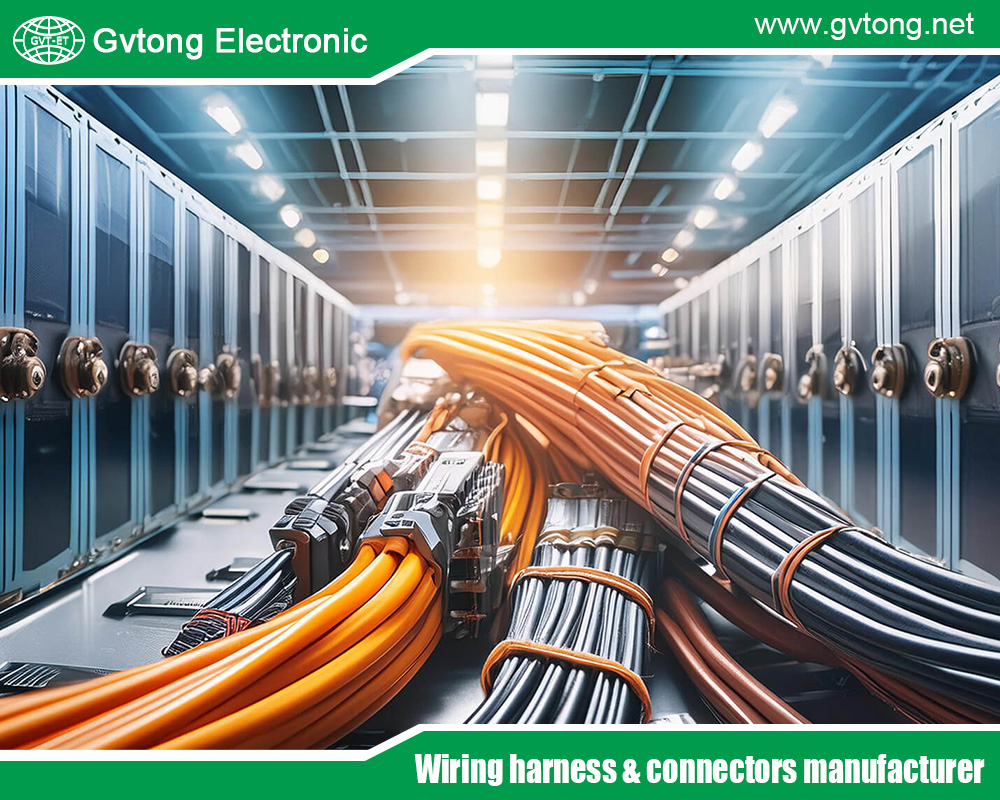
Understanding Automotive Connectors
Automotive electrical connectors link components to transmit power (e.g., to motors or lights) and data (e.g., for sensors or communication networks). A connector typically consists of a housing (plastic or metal), terminals (pins or sockets), locking mechanisms, and seals for environmental protection. They operate in harsh conditions: temperatures from -40°C to 125°C, vibrations up to 20G, and exposure to water, dust, or chemicals.
- Multi-Pin Connectors: These house multiple terminals (2–50+ pins) in a single unit, enabling simultaneous power and data connections. Examples include Molex Mini-Fit and TE Connectivity’s AMPSEAL, used in complex systems like engine control or infotainment.
- Single-Pin Connectors: Designed for dedicated circuits, these feature one terminal, ideal for high-current applications like battery connections or grounding. Examples include Deutsch DT single-pin connectors and ring terminals.
Understanding the differences between these connectors is key to selecting the right one for specific vehicle functions.
Multi-Pin Connectors: Features and Benefits
Multi-pin connectors are the go-to choice for applications requiring multiple signals in a compact form. Their design integrates several circuits into one housing, reducing wiring complexity and saving space. For example, a 16-pin AMPSEAL connector can manage power, sensor inputs, and CAN bus communication in a single unit, making it ideal for engine control units (ECUs) or ADAS modules. Advantages:
- Space Efficiency: Consolidates multiple connections, reducing harness size.
- Versatility: Supports diverse signals, including low-voltage power (12V–48V) and high-speed data (e.g., Ethernet for autonomous vehicles).
- Scalability: Suitable for mass production in complex vehicles like EVs and hybrids.
Applications:
- Engine management systems, where multiple sensors (e.g., temperature, oxygen) connect to the ECU.
- Infotainment systems, linking displays, audio, and connectivity modules.
- ADAS and autonomous vehicles, supporting sensor fusion for LiDAR, radar, and cameras.
Limitations:
- Complexity: De-pinning and re-pinning for repairs can be intricate, requiring specialized tools.
- Cost: Higher manufacturing costs due to intricate designs and multiple terminals.
- Signal Interference: High-density pin arrangements may risk crosstalk in data-heavy applications.
Multi-pin connectors shine in systems where compactness and multifunctionality are paramount.
Single-Pin Connectors: Features and Benefits
Single-pin connectors are designed for simplicity and robustness, handling dedicated, high-current circuits. They feature a single terminal, often paired with heavy-gauge wires, to deliver power reliably. For instance, a Deutsch DT single-pin connector can handle currents up to 100A, making it ideal for battery connections in EVs or starters in traditional vehicles. Advantages:
- High Current Capacity: Supports high-power applications (e.g., 400V–800V in EVs).
- Simplicity: Easy to install, repair, or replace due to single-circuit design.
- Durability: Robust construction resists vibrations and harsh environments.
Applications:
- Battery connections in EVs, linking high-voltage packs to inverters or motors.
- Grounding circuits in heavy-duty vehicles, ensuring reliable electrical flow.
- Alternators and starters, where high current is critical.
Limitations:
- Single-Circuit Design: Requires multiple connectors for complex systems, increasing bulk.
- Space Requirements: Less compact than multi-pin connectors, impacting vehicle design.
Single-pin connectors excel in high-power, straightforward applications where reliability is critical.
Key Comparison Factors
Choosing between multi-pin and single-pin connectors depends on several factors:
- Performance:
- Multi-pin connectors handle diverse signals, supporting low-voltage power (12V) and high-speed data (e.g., 1–25 Gbps for Ethernet). They’re ideal for systems requiring simultaneous power and data, like ADAS.
- Single-pin connectors prioritize high current (up to 100A or more) and voltage (400V–800V for EVs), suitable for dedicated power circuits but not data-heavy applications.
- Environmental Resilience:
- Both require IP67/IP68 ratings for water, dust, and chemical resistance. Multi-pin connectors often use complex seals (e.g., silicone gaskets) to protect multiple terminals, while single-pin connectors rely on robust, single-point seals (e.g., O-rings).
- Single-pin connectors may have an edge in extreme vibration environments due to simpler designs.
- Installation and Maintenance:
- Multi-pin connectors are harder to de-pin and re-pin, requiring terminal release tools and precise alignment to avoid damaging pins. For example, removing a pin from a 20-pin Molex connector demands care to avoid bending terminals.
- Single-pin connectors are easier to repair, with straightforward crimping or soldering. However, high-current applications require precise crimping to prevent overheating.
- Cost and Scalability:
- Multi-pin connectors are costlier due to complex designs but scale well for mass production in vehicles with intricate wiring.
- Single-pin connectors are cheaper per unit but less efficient for systems needing multiple circuits, as multiple connectors increase costs and weight.
- Compatibility:
- Multi-pin connectors integrate seamlessly with wiring harnesses, consolidating connections.
- Single-pin connectors suit standalone circuits but may require additional harnesses for complex setups.
- Size and Weight:
- Multi-pin connectors save space by consolidating circuits, critical for EVs and autonomous vehicles where weight reduction improves efficiency.
- Single-pin connectors are bulkier, as each circuit requires a separate connector, but their lightweight materials (e.g., aluminum housings) mitigate this in high-power applications.
Applications in Modern Vehicles
- Multi-Pin Connectors: In EVs, multi-pin connectors manage battery management systems (BMS), integrating voltage, temperature, and communication signals. In autonomous vehicles, they connect LiDAR, radar, and cameras to onboard computers, supporting high-speed data for real-time decision-making. For example, Tesla’s ECUs use multi-pin connectors to handle complex signal integration.
- Single-Pin Connectors: These are critical for high-power applications, such as linking EV battery packs to inverters or powering starters in heavy-duty trucks. In hybrid vehicles, single-pin connectors ensure reliable grounding. For instance, a single-pin Deutsch connector in a Ford F-150’s battery system delivers high current with minimal resistance.
Case Study: Tesla’s Model 3 uses multi-pin connectors for its BMS to monitor multiple battery cells, while single-pin connectors handle high-voltage connections to the motor, balancing complexity and power needs.
Industry Standards and Testing
Both automotive connector types must comply with automotive standards:
- ISO 6722: Governs wiring insulation for reliability.
- SAE J1128: Specifies low-voltage system requirements.
- ISO 26262: Ensures functional safety for ADAS and autonomous systems.
- RoHS/REACH: Ensures environmental compliance by limiting hazardous materials.
Testing includes:
- Vibration: Up to 20G to simulate road conditions.
- Thermal Cycling: -40°C to 125°C to ensure performance in extreme temperatures.
- Ingress Protection: IP67/IP68 for water and dust resistance, critical for under-hood or external applications.
Manufacturers like TE Connectivity and Deutsch subject connectors to rigorous testing to meet these standards, ensuring reliability in automotive environments.
Challenges and Best Practices
Challenges:
- Multi-Pin: Risk of pin misalignment, signal interference, or complex repairs. Corrosion in multi-pin connectors can affect multiple circuits.
- Single-Pin: Overheating in high-current applications or corrosion in exposed environments. Multiple single-pin connectors increase wiring bulk.
Best Practices:
- Use terminal release tools (e.g., Deutsch removal tools) for de-pinning multi-pin connectors to avoid damage.
- Apply dielectric grease or heat shrink tubing to seals, especially for single-pin connectors in high-power systems.
- Test connections with a multimeter to verify continuity and prevent failures.
- Choose multi-pin for complex, space-constrained systems and single-pin for high-current, simple circuits.
- Regularly inspect connectors for corrosion or wear, particularly in harsh environments like engine compartments.
Future Trends and Innovations
The automotive industry’s shift toward electrification and autonomy is driving connector innovation:
- Multi-Pin Connectors: Evolving for high-speed data in autonomous vehicles, supporting Ethernet and 5G for V2X communication. Smart multi-pin connectors with diagnostic sensors are emerging to monitor connection health.
- Single-Pin Connectors: Advanced materials (e.g., copper alloys, lightweight composites) enhance efficiency in 800V EV systems. Connectors for wireless charging are reducing reliance on physical single-pin designs.
- Chinese Manufacturers: Companies like Luxshare Precision are leading in cost-effective, high-quality connectors, meeting global demand for EVs and autonomous vehicles.
These trends ensure connectors keep pace with the industry’s technological advancements.

Conclusion
Multi-pin and single-pin automotive connectors serve complementary roles, each tailored to specific needs in modern vehicles. Multi-pin connectors excel in compact, multifunctional applications like ECUs and ADAS, while single-pin connectors deliver unmatched reliability for high-power circuits like EV batteries. By understanding their performance, environmental resilience, and maintenance requirements, automotive professionals can optimize wiring systems for safety and efficiency. Adhering to industry standards, using proper tools, and staying informed about innovations like smart connectors will ensure success. As vehicles advance toward electrification and autonomy, choosing the right connector—multi-pin or single-pin—will drive the future of automotive performance.
For more about the key to automotive circuit stability: Multi-Pin vs. Single-Pin automotive connectors, you can pay a visit to Gvtong at https://www.gvtong.net/ for more info.

